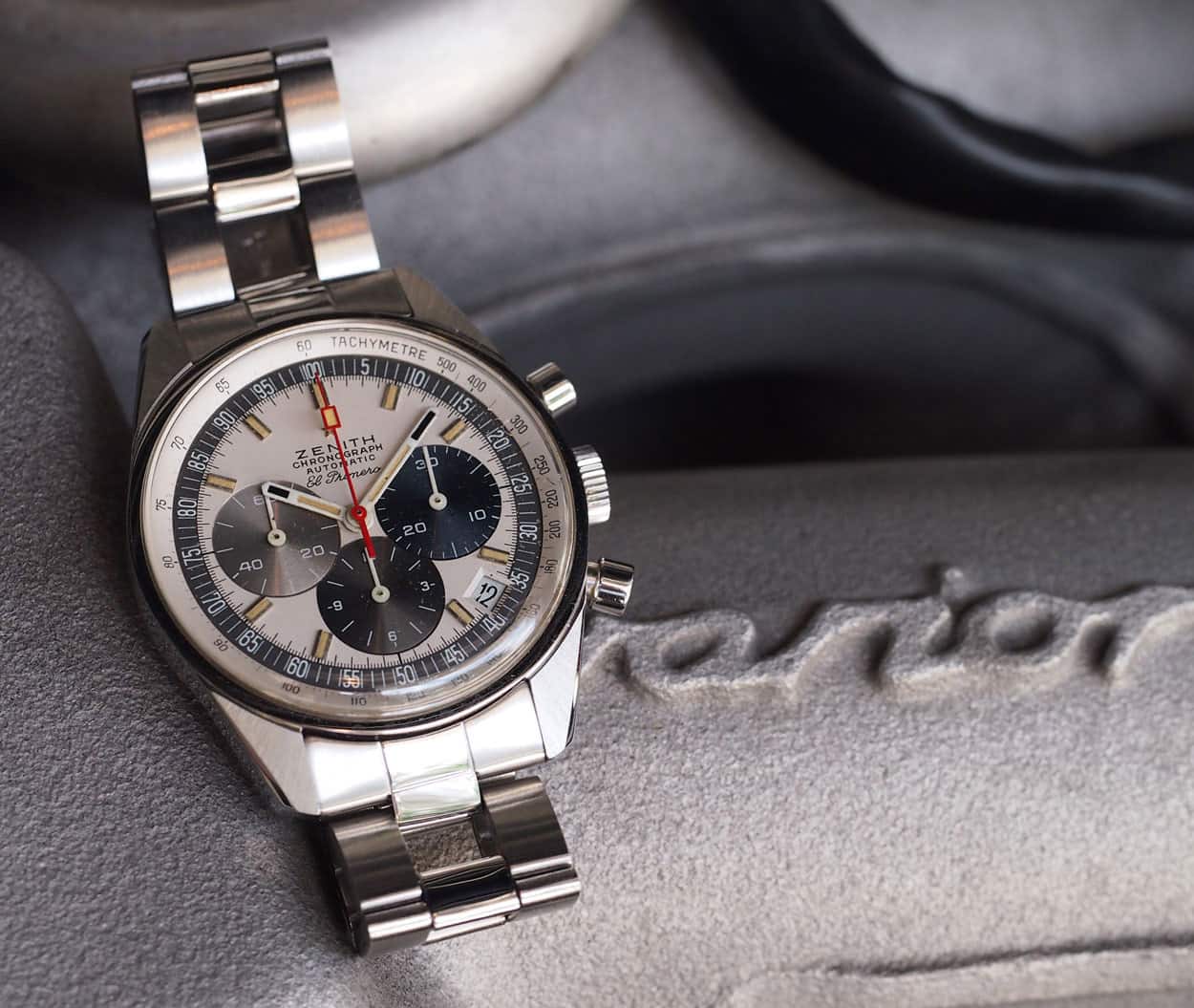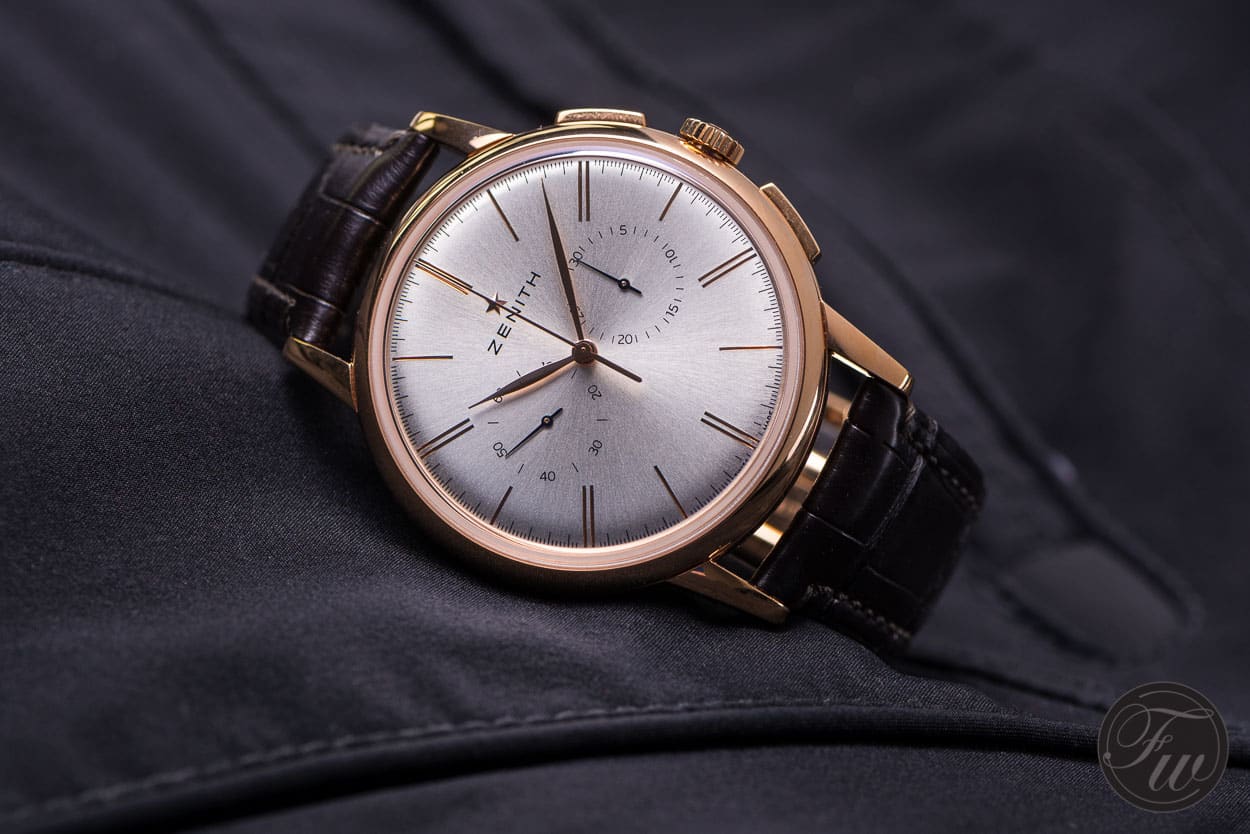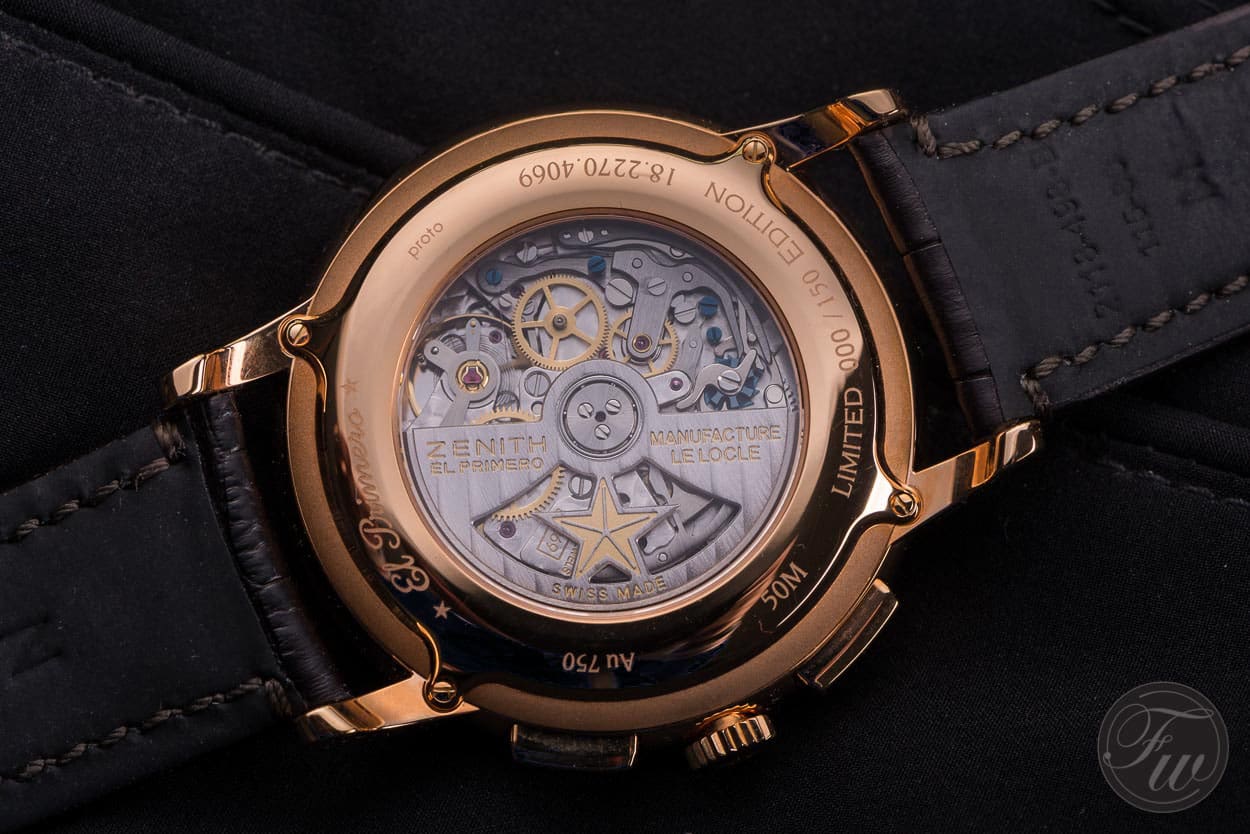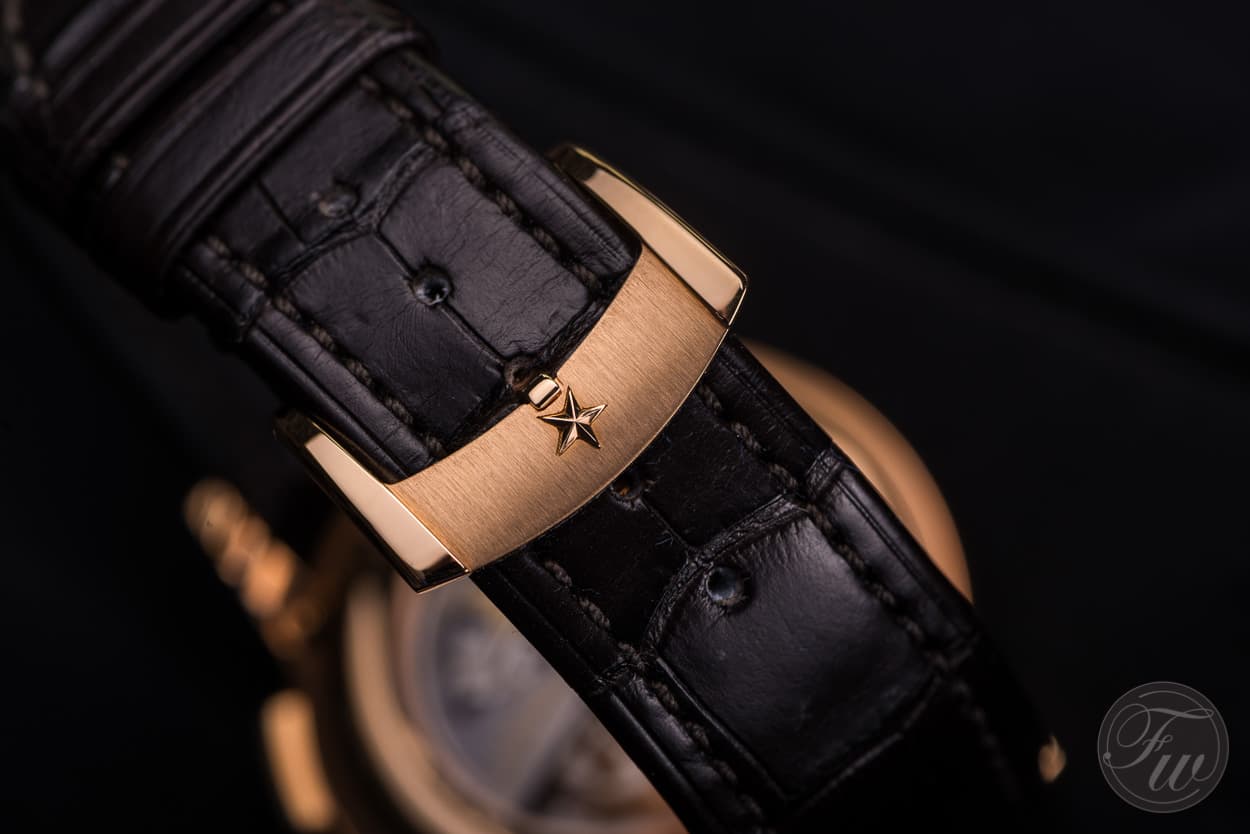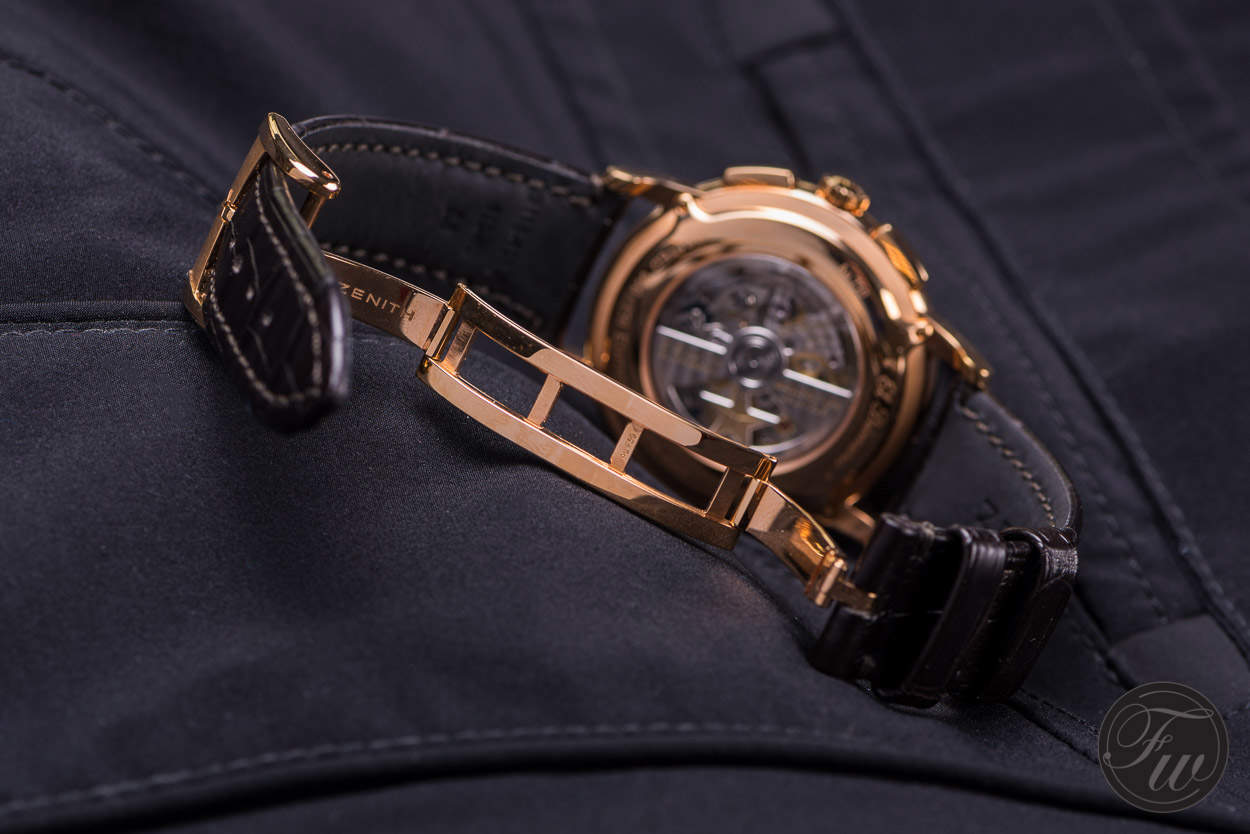Hands-On Review of the Zenith Elite Chronograph Classic (El Primero) in Gold
When the watch craze begun for me, somewhere in the 1990’s, I met with a watchmaker (who I became friends with) who had this interest in Zenith’s El Primero chronograph movements. Oh, and gold watches. He showed me his Zenith El Primero Chronomaster with full calendar in gold and I was sold. Every time I see this watch – be it in gold or stainless steel – I remind myself to buy that watch at some point.
So, when Zenith contacted me whether we would be interested in doing a review and photo shoot on their Zenith Elite Chronograph Classic I immediately said yes. A while ago Bert and I traveled to Switzerland to do a little tour visiting watch manufacturers and one of them was Zenith (you can find the visit report here). It was one of the most impressive visits I have done so far since 2004.
Sure, there are manufactures that do beautiful things as well, like A. Lange & Söhne’s hand-engraving on the balance-cock of the movement, Grönefeld’s painstakingly polishing on their movements or name some of the other (independent) high-end watchmaking brands and people. However, when visiting Zenith in Le Locle in the winter of 2014, the old buildings that houses approximately 250 employees working on watches gave me the feeling of being in a little village of watchmaking with all their (connected) buildings. Walking in the workshops, in the original old building style made me feel being in the 1950s, despite all the modern equipment in the rooms. We’ve seen the entire process, from the department with designers and product development, the room where they cut the big bars of brass into movement plates, to the end of the process where watches are being cased and made ready for shipment.
Some brands only show the process of casing or perhaps the assembly of movements, but at Zenith we were able to see everything, from the first steps till the final checks and making the watch ready for shipment. It left a huge impression on us.
I am not sure whether end-consumers get that same impression from seeing Zenith at the dealer. I rarely see advertisements from Zenith in which they could explain a bit what they are doing and how special they are in today’s watch manufacturing environment. So how can they (or you) learn about these things, facts of Zenith’s in-house watchmaking and some history on one of the world’s first – and still in production!!! – automatic chronograph movements, you need to read watch specific magazine titles (preferably on-line) like ours, or aBlogToWatch, Hodinkee, Deployant, Bexsonn and so on.
“The First”
You have to know that the El Primero (meaning ‘the first’) was one of the first automatic chronograph movements next to the Chronomatic (a joint venture between Heuer, Dubois Dépraz, Hamilton-Buren, Breitling, and Seiko’s 6139A automatic chronograph movement. All introduced in 1969. The Zenith El Primero caliber 3019PH was first used in the Zenith reference A386 (for your reading pleasure, we did a comparison article between the Zenith El Primero A386 and the Seiko 6139 here). Zenith decided to develop their movement with a beat rate of 36,000vph, a so-called high beat movement. Seiko, while later on also using high beat movements, had a beat rate of 21,600vph for example.
Today’s Zenith El Primero movements are still based on this 1969 self-winding chronograph, with the high beat rate of 36,000vph, enabling you to measure up to 1/10th of a second with its 5hz frequency. Zenith told me that they are still perfectly capable of servicing – any – El Primero they ever did, including the very first ones. They produce everything in-house of course, so they can re-produce parts, but the construction of these movements is very much the same, whether it is an movement of decades ago or a brand new El Primero caliber. For the end-consumer, that’s you, this also helps in keeping the service pricing (and perhaps even more important: the time needed to service a watch) very reasonable.
Let’s not make it too techie here, and move on with our hands-on review of the Zenith Elite Chronograph Classic in gold.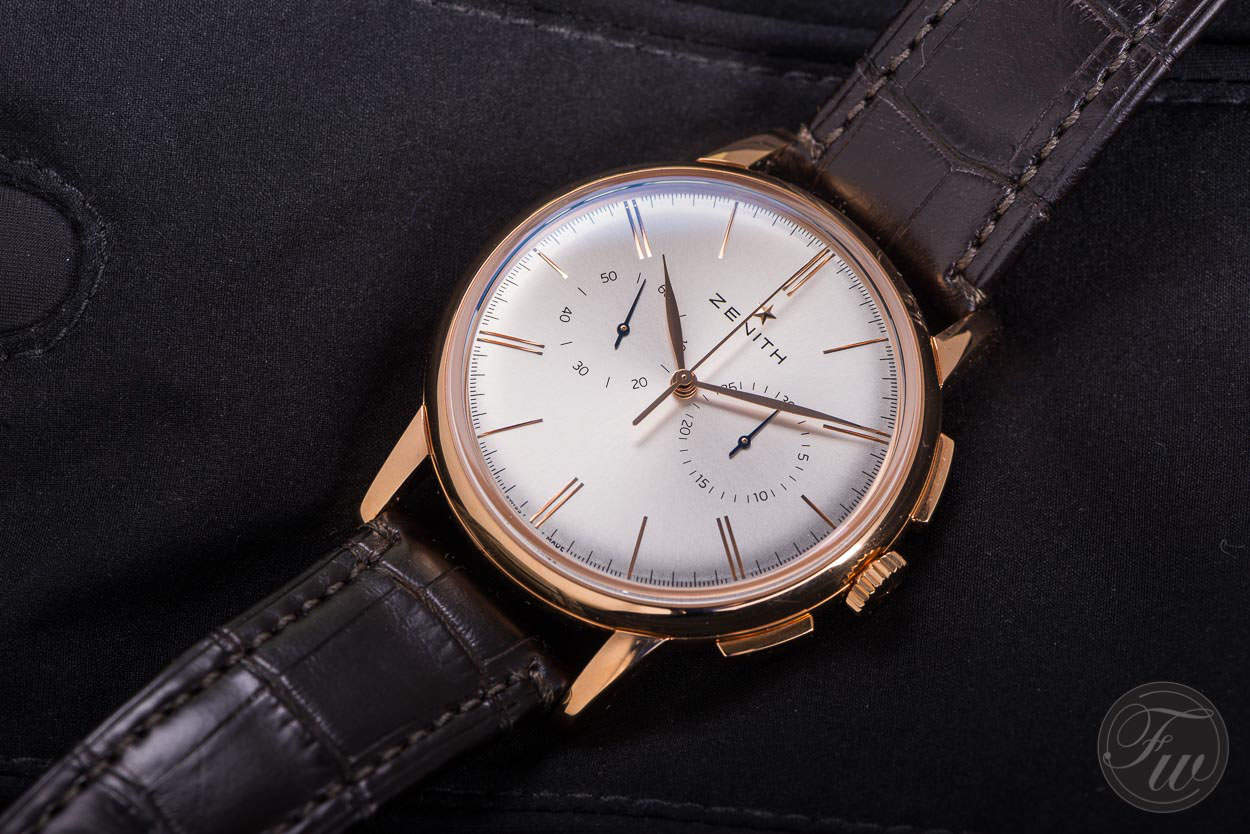
Zenith Elite Chronograph Classic (El Primero) in Gold
Today I am reviewing the Zenith Elite Chronograph Classic reference 18.2270.4069/01.C498 with El Primero 4069 calibre. This watch is, as the name suggests, part of the Elite collection. This used to be a collection with Elite movements (not an El Primero calibre). Zenith also has a collection called El Primero, which makes it a bit confusing sometimes to oversee the collection or determine to which collection a watch belongs. This specific Zenith Elite Chronograph Classic doesn’t have ‘Elite’ printed on the dial, so if you’d see it in the display of a retailer, you could have well assumed it is a watch that belongs to the El Primero family, based on the fact that it is a chronograph. Besides the El Primero and Elite families, there are also the Star, ‘Pilot’ and Academy ones. These (can) also use El Primero caliber movements.
Anyway, that doesn’t have much to do with the watch itself of course. It is just a confusing way to segment a collection of watches.
The Zenith Elite Chronograph Classic was introduced last year (150th anniversary of Zenith) and comes in rose gold, like this one, and in stainless steel.
It is a relatively large watch for a dress watch, as it has a diameter of 42mm and a very thin bezel. So this Zenith sizes like an Omega Speedmaster Professional ‘Moonwatch’, but appears to be larger because of the large dial and thin bezel. In height, this Zenith Elite Chronograph classic measures 11.80mm. The large dial is simply awesome. It gives that 1950s appearance due to the domed crystal (sapphire, not plexi) and beautiful silver toned sunray finished dial. The gold plated applied indexes and leaf shaped hands strengthens this 1950s look as well.
As written above, the fact that there is no model name on the dial (or any other writing besides “Zenith”) makes it perhaps a bit difficult to know to which collection it belongs, but that’s only a practical thingy. For aesthetics reasons, it is simply beautiful that this dial is free from any other writing than the name of the brand.
The chronograph movement used in this Zenith, indicates the recorded seconds and minutes. Although I also would like to measure hours (which I regularly do when traveling for example), this one is only up to 30 minutes. It is not that a big deal for most people I guess, this watch isn’t meant to be a tool watch for example, it is a dress watch and a chronograph complication is already a bit ‘sporty’ for a dress watch.
One of the coolest things about this dial is that it is very clean and does not have a date window. More than once I commented here on watches that had a date window and in fact shouldn’t have. Patek Philippe’s Nautilus 5711 or Audemars Piguet’s Royal Oak 15202 for example, or the Omega Globemaster. Some watches really do not need a date.
Other watches definitely need a date, but classic dress watches like the Zenith Elite Chronograph Classic should remain date-less. I see it as added value to this watch. Further more, the day or date is something you see in the morning on your phone, laptop or whatever devices you carry around, you only need to know it once every 24 hours and you remember. Time is not, of course.
The caseback also shows us the new El Primero 4069 caliber. This high beat movement has a minimum power reserve of 50 hours and consists of 254 parts. It is a nicely decorated movement, with the Côtes de Genevè finish on the rotor, blued screws and column-wheel, stippling and brushed parts. A joy to observe through the sapphire crystal.
The two-register chronograph is operated using the two rectangular shaped pushers at 2 and 4 o’clock. These rectangular shaped pushers add the 1950s look & feel to the watch and its classic appearance. On the photo below you see these pushers and signed crown, with no crown guards (luckily). You can also observe the classic lines of the case and lugs on that picture, as well as the sapphire domed crystal with AR coating.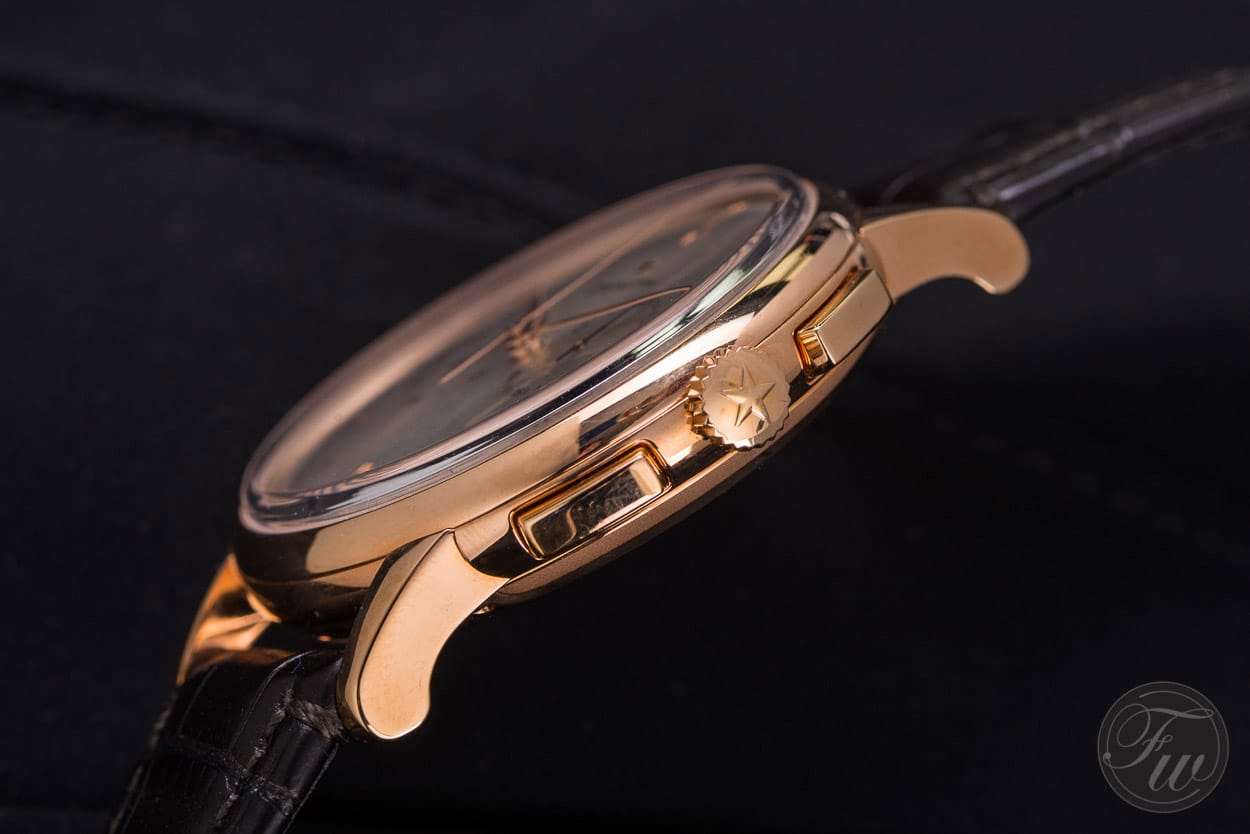
The finish of the 42mm x 11.8mm case of the Zenith Elite Chronograph Classic is a combination of polished and brushed parts, which gives it a wonderful appearance, both in the sun and in low-light conditions. It is one of the watches that does very well on the wrist, that people will notice and – if they’re into watches – will comment about. I found out that it got some nice comments first, and than being asked about which brand is was. That is quite interesting, as a lot of time people will recognize the watch of a certain brand (let’s say Rolex or Audemars Piguet) and only then comment on it.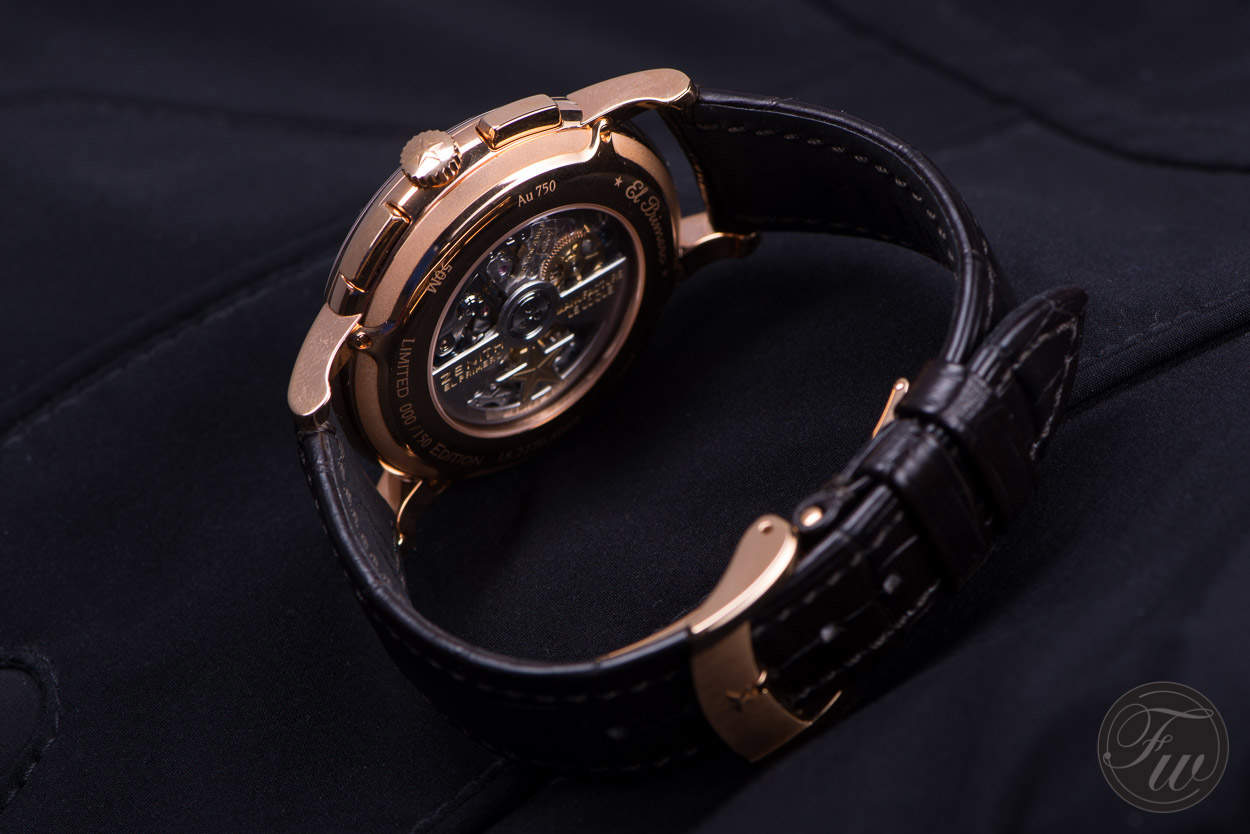
The Zenith Elite Chronograph Classic comes on a beautiful stitched black alligator strap. Even though I prefer normal buckles on watches, especially dress watches, this gold folding buckle on the watch is awesome. Again, finished in a combination of polished and brushed parts and the Zenith logo embossed on the clasp.
Although the catalog on the Zenith website doesn’t give any mention of this, the caseback of the Zenith Elite Chronograph Classic indicates that there are only 150 pieces made of this watch. That number corresponds to the anniversary of last year of course. There is also a stainless steel version of this watch, that is not a limited edition.
Conclusion
If this is the route that CEO Aldo Magada (great guy, we spoke to him for quite a while in Le Locle) and Jean-Claude Biver (Head of watches for the LVMH group) are going to take, I am all for it. I assume Biver knows Zenith is not Hublot and makes sure that it stays close to the roots of this brand from Le Locle.
The Zenith Elite Chronograph Classic in rose gold is a watch that definitely impressed me. There is little to criticize here, except for the confusing use of model and family names perhaps, but that has nothing to do with the watch itself. One could say that 42m is too large for this watch, but I concur. Although 39mm or 40mm would sound more ‘classic’ than 42mm, it actually wears great on the wrist and mine are not that large. It is the only thing actually that might bother – or prevent – people from buying this Zenith Elite Chronograph Classic, whether it is the rose gold or a stainless steel watch. If the dial design or lack of a date window bothers you, I think you are just trying to seek for excuses not to buy one if you are in the running for a new chronograph with a classic touch and price range.
Talking about pricing, the rose gold Zenith Elite Chronograph Classic I reviewed has a list price of $21,600.- USD. The stainless steel one is priced at $8900.- USD. $21,600 is a lot of money, even for a gold watch, but it is a limited edition and using this famous in-house chronograph movement. The stainless steel version is very attractive in that regard. It is on par with Omega’s or Breitling’s in-house chronograph movements for example, but those watches that are equipped with one are sporty pieces and have a completely different style. When compared to other brands that offer classic chronographs with in-house movements that are on par with this El Primero 4069, I think it is very fairly priced to be honest.
Visit the official Zenith website for more information.


